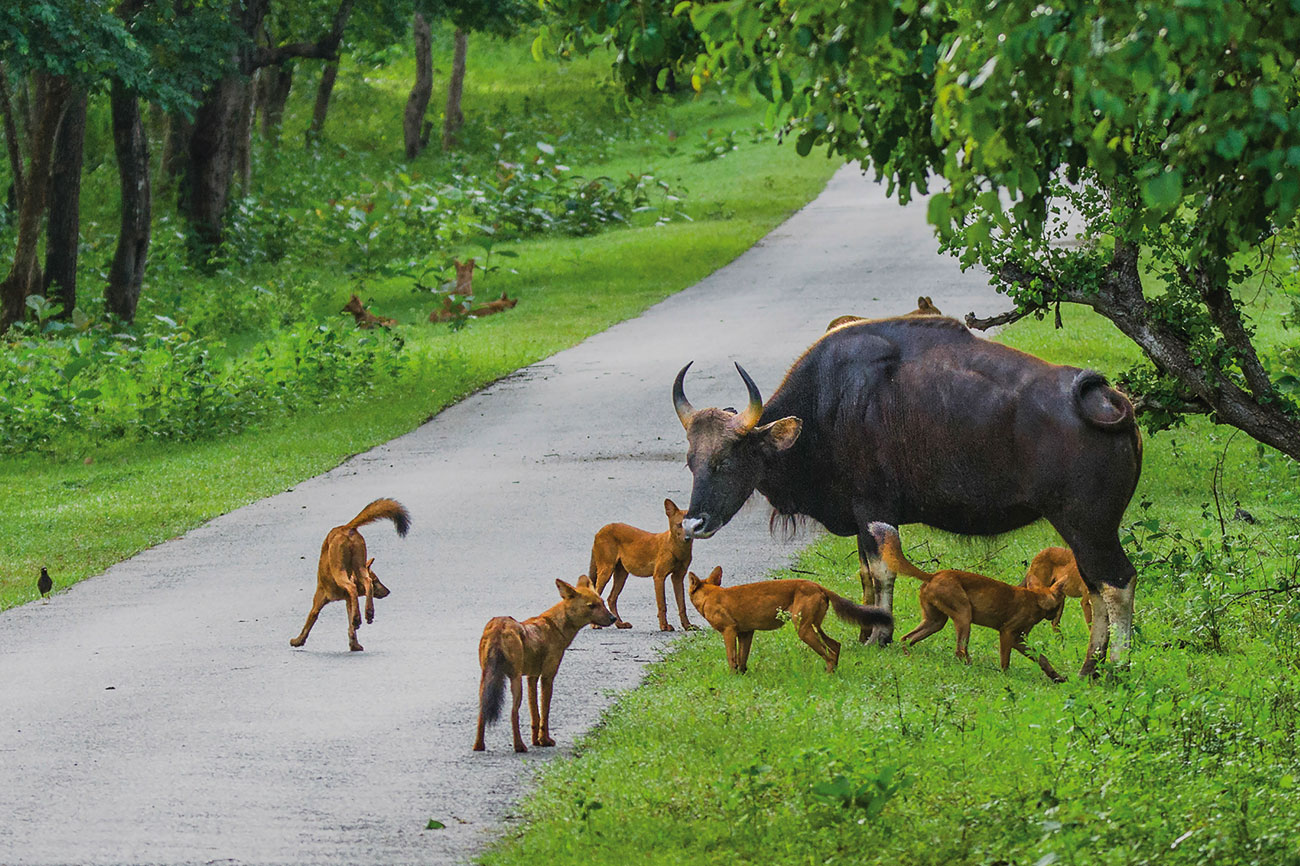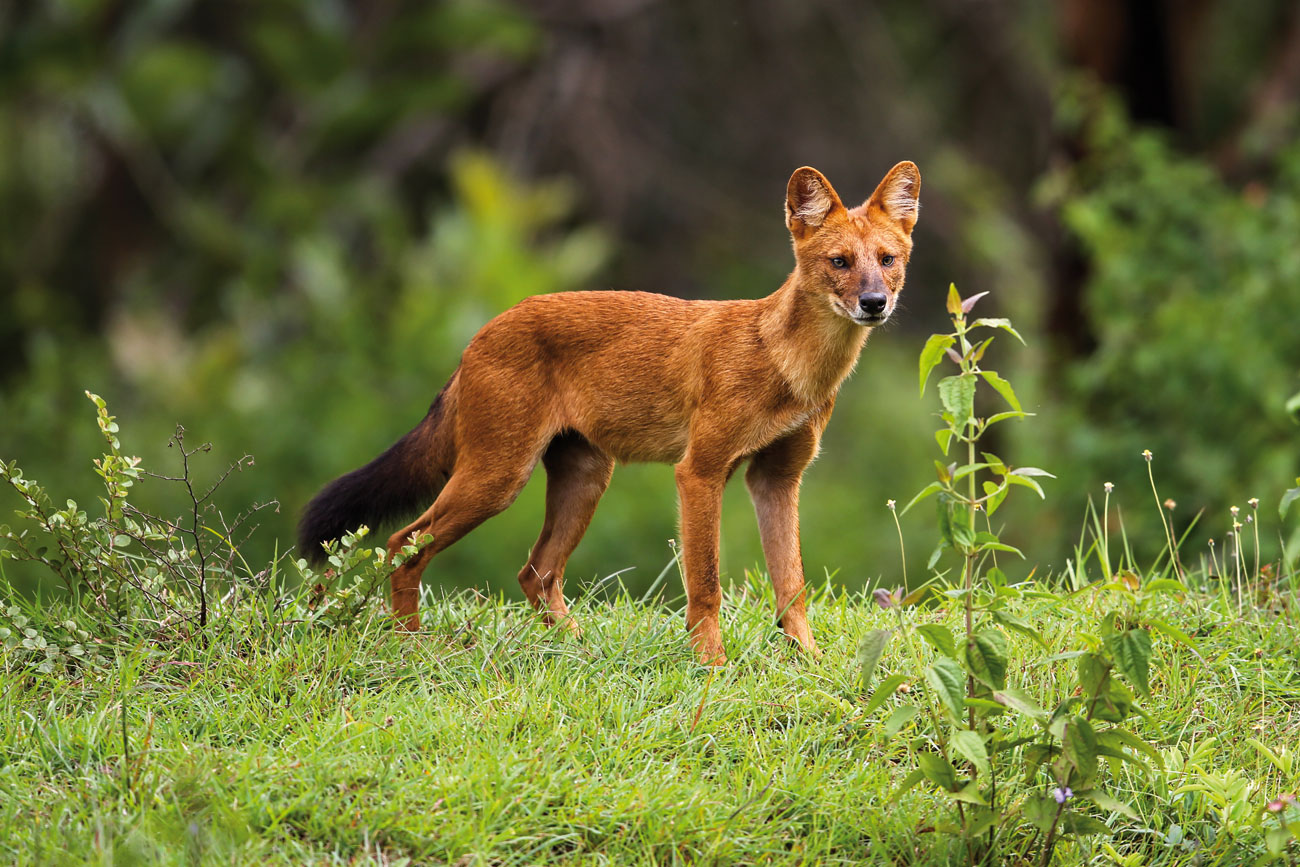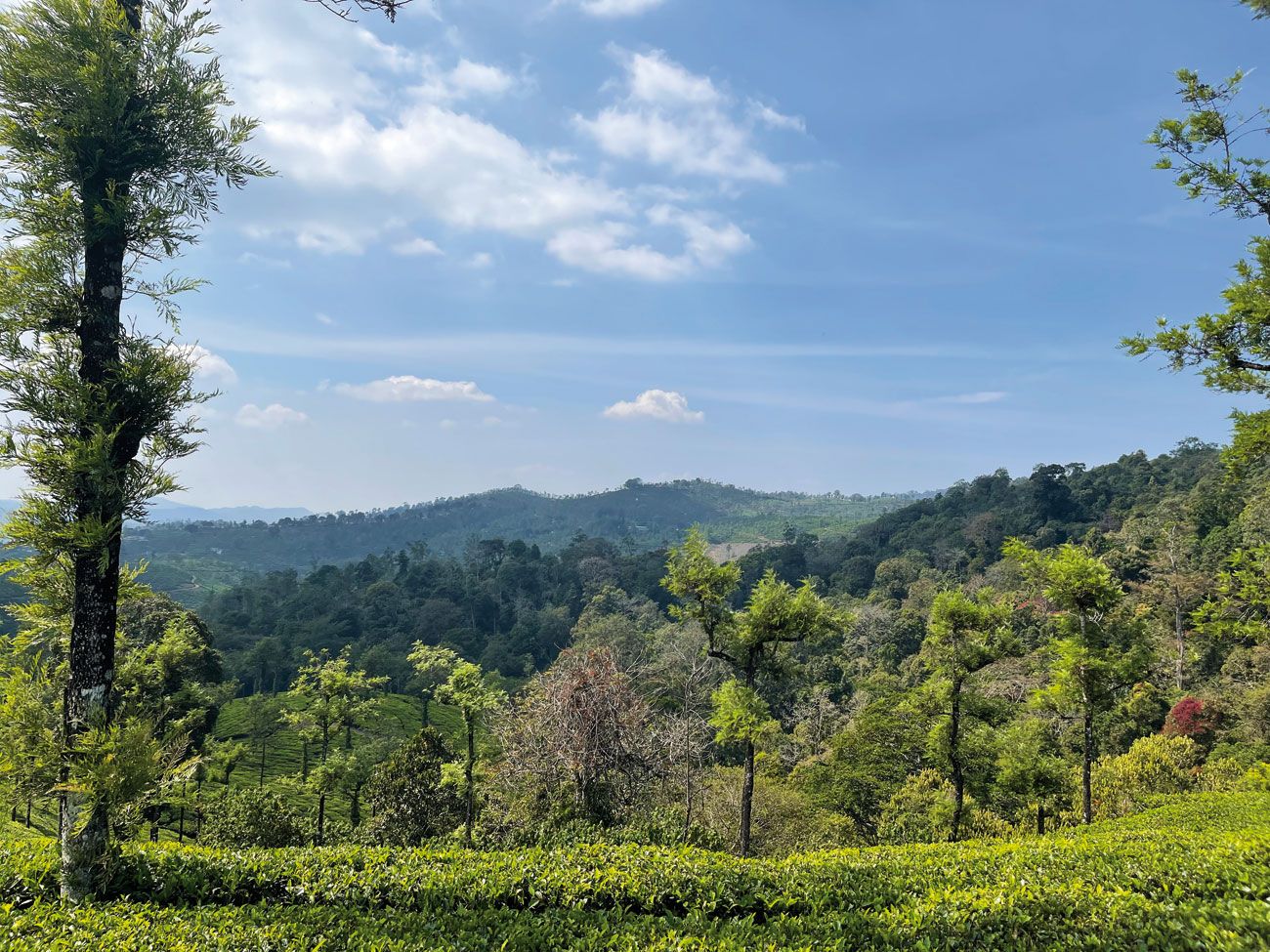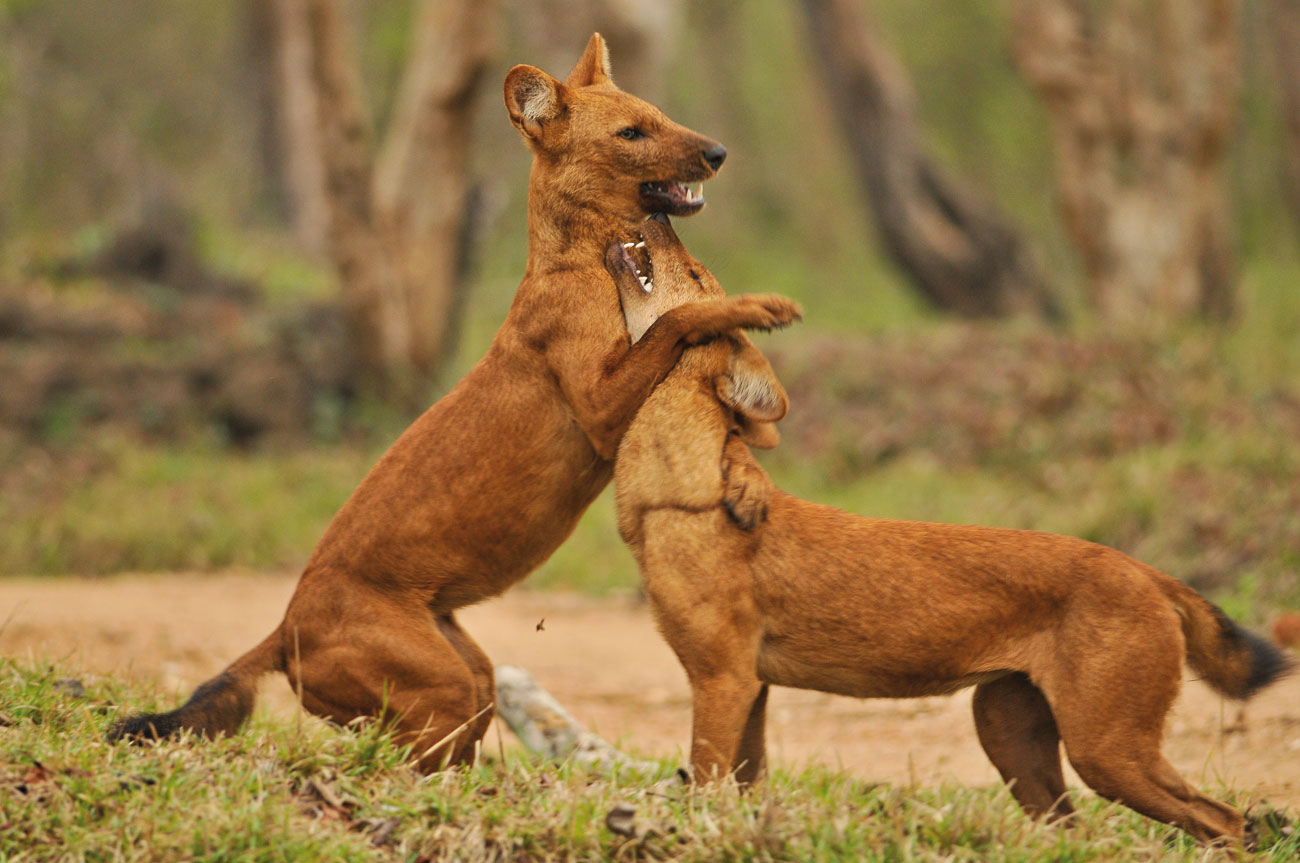The Canid Cooperative
First published in Sanctuary Cub,
Vol. 44
No. 1,
January 2024
Traversing a dense forest patch, a group of rust-coloured shadows make rapid, synchronised movements amidst the green backdrop. The whistling hunters, the dholes, are out on a hunt. Text by Avantika Deep Sharma.
The Whistling Hunters
The jungle reverberated with a cacophony of yaps, yaks, and cackles, followed by a terrifying scream. The whistling hunters, dholes, are out on a hunt. Synchronised movements, calls and attacks help them corner and take down much larger prey. Charging haphazardly, each individual attacks, bites, or grabs at the prey – usually a large, hooved animal – until it is overwhelmed by their coordinated strength. The wild dogs’ short canines give a secure hold, but their jaws are too weak to deliver a killing bite. The coordinated attack turns into a messy kill as each individual bites flesh off the prey, often while it is still alive, until only the ossified spoils of the prey remain. This sight may send shivers down one’s spine. Unfortunately, this cooperative gory act has cast dholes in a bad light and blankets other aspects of their vibrant social life.
_C-1300_1703667300.jpg)
Dholes or Asiatic wild dogs are an endangered group of social canids endemic to Asia. Photo: Prakash Ramakrishnan.
The endangered dholes are wild, group-living canids found only in Asia. They are cooperative breeders – individuals from previous generations help the parent pair raise the pups. Their teamwork is not limited to hunting, but also extends to raising and nurturing pups. Until recently, I was among those who did not envision a pack of dholes being anything beyond a synchronised hunting unit. This perspective changed dramatically when I got the opportunity to closely observe their social life in Valparai, Tamil Nadu, as part of a research project with the Wildlife Conservation Society-India.

Dholes hunt in packs to take down much larger prey, even the occasional gaur. Photo: Vikas Rumale/Sanctuary Photolibrary.
Like Herding Pups
One early winter morning, one of our local informants spotted a pack in a nearby tea plantation. Adrenalised by the possibility of catching a glimpse of this ‘secretive’ canid, we rushed to a safe vantage point. I immediately began scanning the maze of tea bushes and the adjacent rocky outcrops. There it was! My eyes finally caught some movement amid the bushes; the wild red dog was trotting downhill towards the open rocky area. To my surprise, instead of a fierce pack on the hunt, a trail of frolicking pups emerged from the tea bushes!

The author studies dholes in Valparai as part of a research project. Photo: Public domain/David Raju.
A few seconds later, an adult male followed the pups; he appeared to be disciplining the scampering little ones and ensuring they did not stray too far away from the bushes. The inquisitive pups were sniffing around every rock, wagging their tails and scurrying in every direction. Suddenly, all of them dashed towards a tea bush, followed by a clamour of squeals. I squinted hard to see what the commotion was all about; it was the alpha female nursing the pups.
I was still marvelling at the tender side of these carnivores when we spotted another dhole that was keeping an eye on us, possibly wondering about our motives. It seemed to alert the rest of the pack members, who were slowly emerging from the bushes, wary of any threatening movement.

Valparai, a hill station in Tamil Nadu, is a mosaic of tea estates and hilly forests. Photo: Sabiya Sheikh.
As the morning progressed, the adjoining tea estate got busy with tea workers, and the dholes decided to move. The adult and subadult pack members worked together to herd the young pups to safety. There was a clear demarcation of tasks, with a subset of the pack involved in vigilance, while the rest ushered the pups in batches. In no time, all the young ones were safely amid the tea bushes, and the rest of the pack followed soon after.

A pair of dholes in a playful mood. Photo: Satisha Satya/Sanctuary Photolibrary.
As their rust-coloured silhouettes blended into the tea bushes, I felt almost giddy with amazement and unbridled excitement. The scientist in me was already lost in thought about their incredible adaptive abilities that help them survive and thrive in a human-use area.
How To Study Animal Behaviour
~ Use a notepad and pen to record your observations.
~ Start with animals such as insects, birds, or your pet!
~ Quietly watch the animal and note behaviours such as feeding, nursing, alert/anti-predator behaviour, stalking/hunting, playing, calling, etc. Record the time spent on each.
Living alongside other wildlife, including dholes, is a daily experience for the people of Valparai. While such equations between humans and predators is not a rarity in India, the intricate nuances of their social equations with Valparai’s wonderful people remain to be unravelled. I continue exploring the beautiful wild dog’s landscape to better understand the fascinating social lives of dholes.
A wildlife biologist interested in animal behaviour, Avantika earned her master’s degree from NCBS, and is currently a Research Associate at the Wildlife Conservation Society-India. You can find her on Instagram at @avantikadeepsharma7 or on X at @DeepAvantika.


_C-1300_1703667300.jpg)



